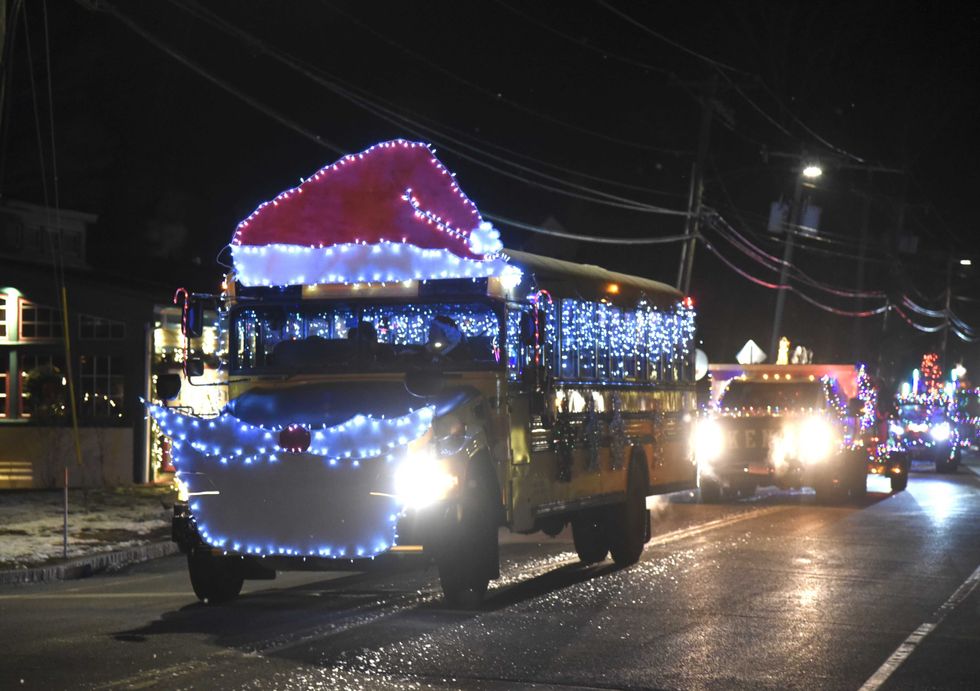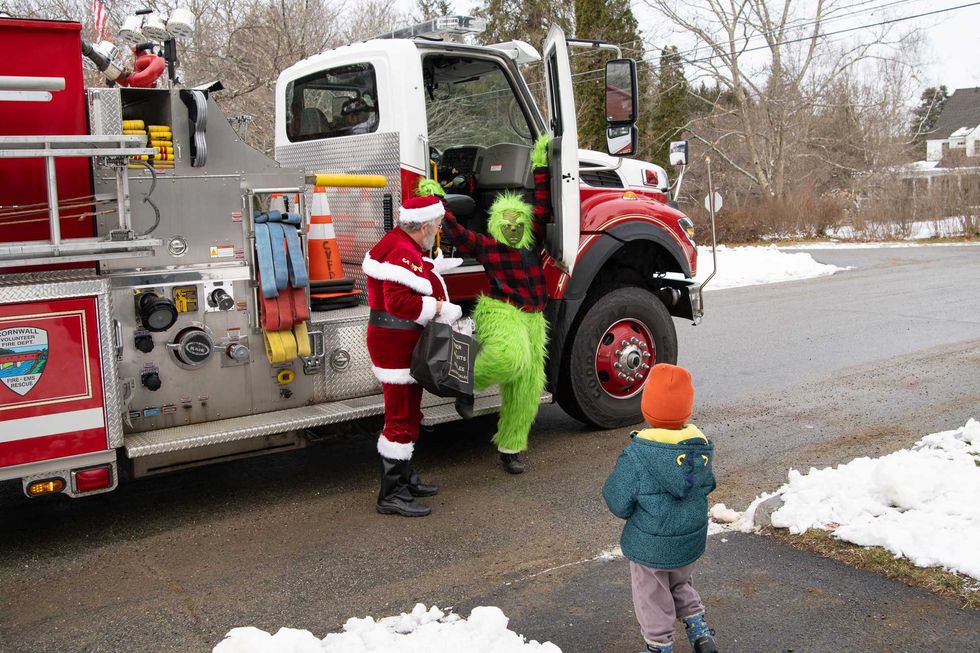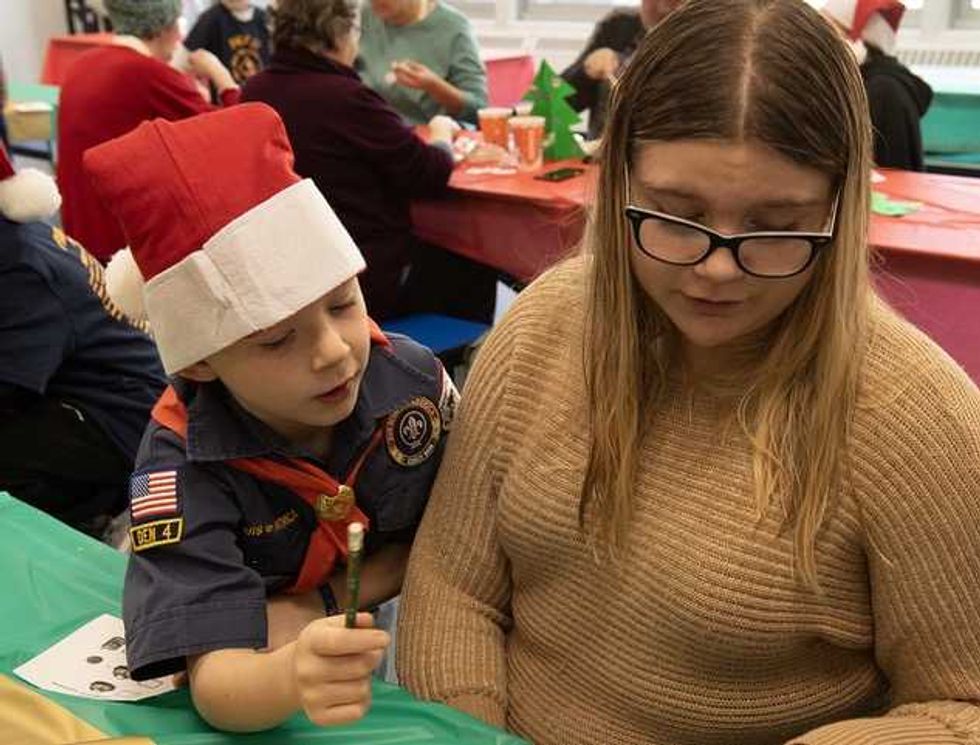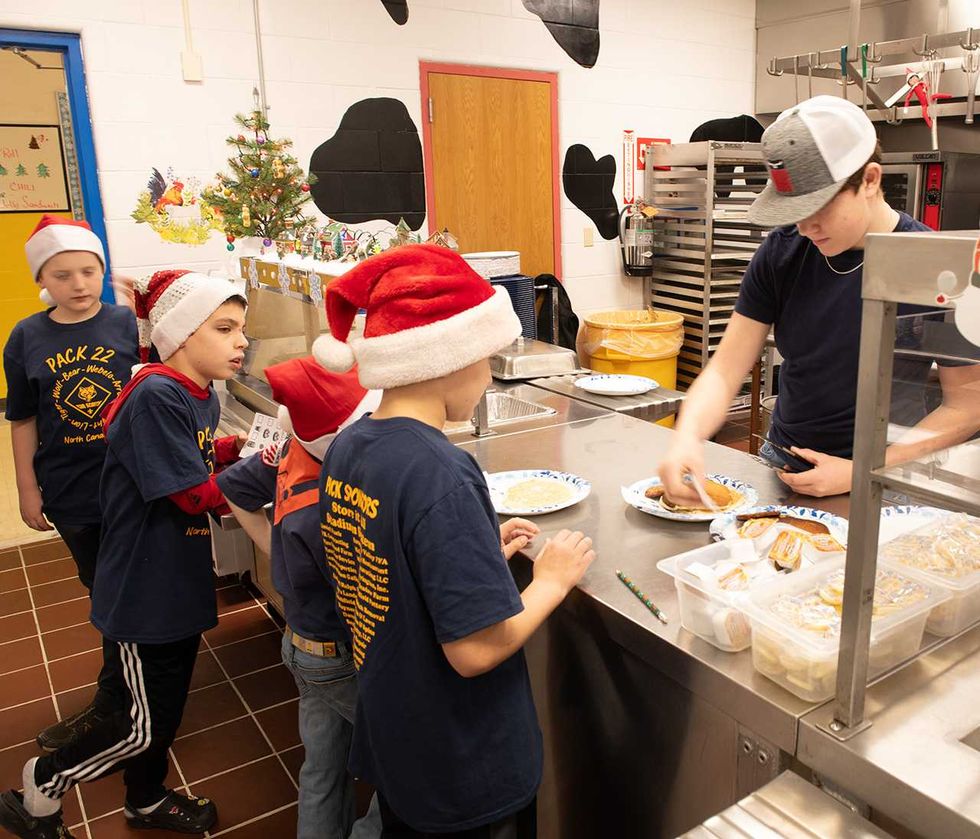Becoming ‘Lakeville Journal’

At left, Riley Klein is seen courtside covering a basketball game. Next to him is another Lakeville Journal ‘veteran’ — HRVHS junior and LJ intern Simon Markow.
Provided

At left, Riley Klein is seen courtside covering a basketball game. Next to him is another Lakeville Journal ‘veteran’ — HRVHS junior and LJ intern Simon Markow.
As reporters, we spend time learning about the people in our communities. It has occurred to us that perhaps the community might like to know more about us, the reporters and editors who bring you the news every week. As a first of such occasional introductions, Lakeville Journal Managing Editor Riley Klein shares how he found his way to the paper.
People around the Northwest Corner are starting to recognize me. “Lakeville Journal is here,” the players say, as if it’s my name, when I appear on the sideline of a school sports game. How did this come to be? I am not from this area and prior to 2022 I knew no one in the towns I now cover. But today, I can’t picture myself anywhere else.
Before The Lakeville Journal, I never once considered pursuing a career in journalism. The week I applied to work here I also submitted two other applications: one to become the coach of Post University’s newly formed e-sports team, and another for a mortgage on an investment property.
The applications went out like sonar waves, pulsing into the unknown as I embarked on a career change following a shift in my life. I moved to Connecticut the year prior after leaving Colorado, where I previously operated an employment service agency for adults with disabilities. The pandemic prompted me to sell my home in Denver and move back east, closer to where I grew up in New York State. I landed in Torrington and completed the life rebrand with a new profession.
In my cover letter to the Journal I wrote, “Having moved to Torrington last year, I am still new to the Northwest Corner and enthralled with all the sleepy New England villages. I find great interest in the goings-on of the local communities and would cherish the opportunity to tell those stories.”
The application responses rolled in: “Thanks, but no thanks,” from Post. “Would you consider a hard money loan?” from the lender. And, “We’d like you to come in for an interview,” from the Journal.
Journalism it is.
A few days later I met John Coston and Patrick Sullivan in Falls Village for an interview, which ended with a story assignment: “The Salisbury branch of Visiting Nurses & Hospice of Litchfield County made a directory for community resources. Here’s the address. Take a photo and write a caption for Instagram. Today.”
Even though I had no journalism experience, they took a chance on me. I began producing social media content, primarily video reports with voiceovers. It didn’t take long for my role to expand. The stories jumped from social media to the newspaper as I started writing articles. I got into page layout, arranging stories and photos in the paper each week. I became the Cornwall reporter, then the sports reporter, then the North Canaan reporter.
Almost exactly a year in, I was offered the managing editor job. Guidance from seasoned colleagues in the newsroom taught me the ropes, and I truly have cherished the opportunity to tell so many stories.
Needless to say, learning on the job involved some bumps along the way. Errors led to lessons and despite all efforts to avoid printing corrections, each blunder taught me something new. For example:
What’s a byline?
One of my very first writing assignments was covering pickleball at Foote Field in Cornwall. When interviewing a player, she asked me what my byline was. “My what? Oh, you mean my recent headlines?” ... “No,” she said. “Your name.”
Show up early
For my first football game, Torrington vs. GNH, I drastically underestimated attendance levels and couldn’t find a parking spot until halftime. I tuned into the radio coverage on WAPJ 89.9 and followed the live box score online. Luckily, the LJ photographer arrived on time.
Fore! Warned
At my first golf match, I figured I would get the best photos by standing in front of the tee box. A prompt “WHOOSH” past my ear was enough to find a safer angle.
Keep it light
One mistake I’ll never make again was made at my first Veteran’s Day ceremony. I asked a Vietnam vet what he remembers most from his time in the service. Instant regret as he became flush and teared up before apologizing to me. Of course, I was the one who was truly sorry.
Looking back, I wish I had considered journalism earlier on. I was always the group photographer and videographer, yet I never saw it as a job. I was under the impression print was a dying industry and there was no future in the field. Fortunately, the Journal has found a way to continue to cover small communities in an era when so many local papers could not.
To all the readers, advertisers and donors who make this possible, thank you. This is your paper and I feel privileged to cover your communities. “Lakeville Journal” will continue to cherish telling your stories.
Riley Klein
Managing Editor
2023-present
SHARON — Residents of all faiths are invited to the Sharon Town Green on Sunday, Dec. 14, at 4:30 p.m. for the annual lighting of the menorah for Hanukkah.
Sharon resident Carl Chaiet erected the menorah on the green after finding pieces of a candelabra in his father’s basement in the Catskills that had been saved from a closed synagogue, following Jewish tradition that broken religious objects be brought back into use or buried in cloth.
Chaiet, in a Dec. 6 press release, maintained that the ceremony, while Jewish in format, applies universally: “The celebration of Chaunukah is a celebration of strength, determination and resistance. Each year the message seems pertinent to all of us and we invite all faiths to come join in the lighting.”
Participants are asked to bring a flashlight to be able to read the music.
Questions may be directed to telford@earnest.net or 860-364-5618.
The Kent Volunteer Fire Department’s Parade of Lights rolled down North Main Street the evening of Saturday, Dec. 6. The procession featured illuminated vehicles of all sorts including trucks, buses, tractors, four-wheelers, boats, motorcycles, a steam engine and many holiday-themed floats.


Gen Dinneen carefully creates a tree ornament at Cornwall Town Hall Saturday, Dec. 6.
CORNWALL — Santa Claus made time during his busy season Saturday, Dec. 6, to spend a morning with the people of Cornwall.
He (Dave Cadwell) arrived in a fire truck, and the Grinch hitched a ride.
Attendees made tree ornaments, drank hot cocoa, decorated cookies and shared breakfast with Father Christmas. Some guests informed him of what they would like to see under the tree this year.
Down the road, the annual Christmas Fair was held at the United Church of Christ.
Shoppers browsed wares by local crafters and vendors, including a selection of laser-engraved ornaments made by Brian Saccardi.
There was also an apple pie contest, crèche display, soup and chili.
Tom Brown contributed to this article.

Santa Claus made a visit to the Cub Scout’s breakfast in North Canaan Sunday, Dec. 7, where he heard from Bria King, 4
NORTH CANAAN — Cub Scouts donned their Santa Claus hats on Sunday, Dec. 7 at the North Canaan Elementary School to host a pancake breakfast with Santa.
A steady stream of families arrived for the annual event and found an eager swarm of 14 Scouts from Pack 22, which covers Sheffield, Falls Village and Salisbury as well as North Canaan, waiting to take their breakfast orders.
Bryce Salmon, 14, now a Boy Scout in Troup 22, was stationed in the kitchen fulfilling orders as his mother, Amy Salmon, ran the griddle. Bryce’s younger brother, Declan, 6, from Lakeville, was busy like all the others taking orders, and was wearing his father’s Cub Scout uniform from the 1970s.

Sonia Gale, another leader from Pack 22, also was helping out in the kitchen said, “We do this every year, and this is the first time at the school. We were at Pilgrim House before.”
Fourteen scouts ran a tight ship as they split up and covered all the tables, taking orders for pancakes, sausage and coffee and juice.
Santa Claus (Joe Brady of Winsted) toured the tables to visiting with young and old and seemed to be a magnet for the Scouts, who drifted around him as he moved through the busy scene.
